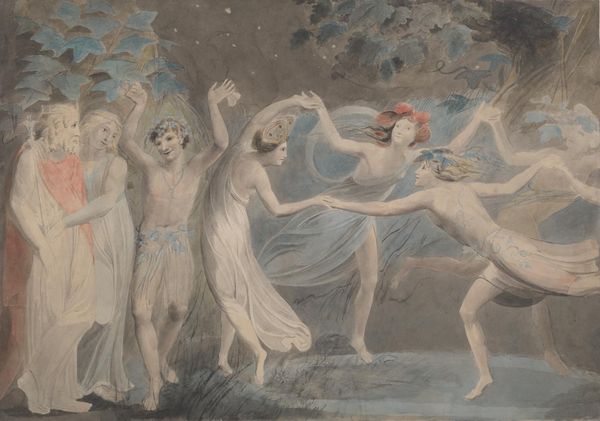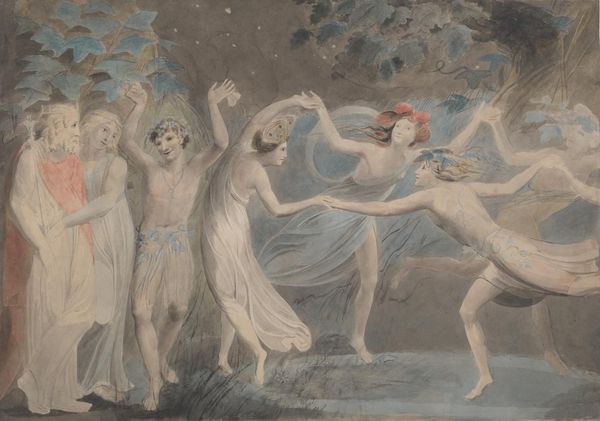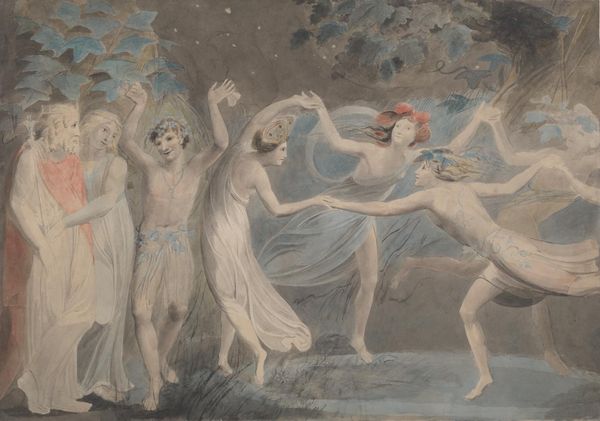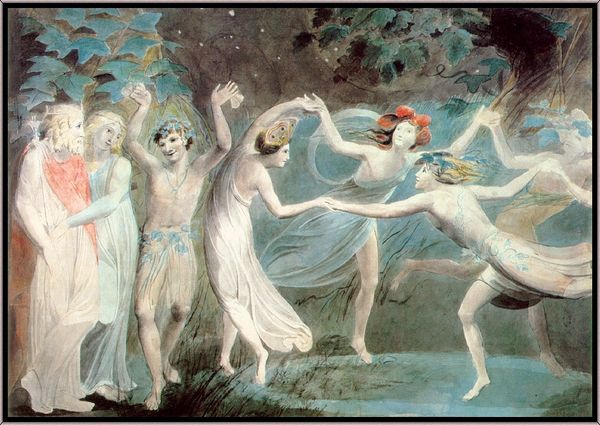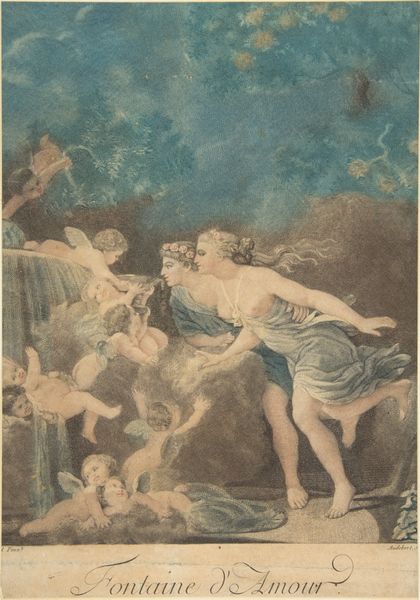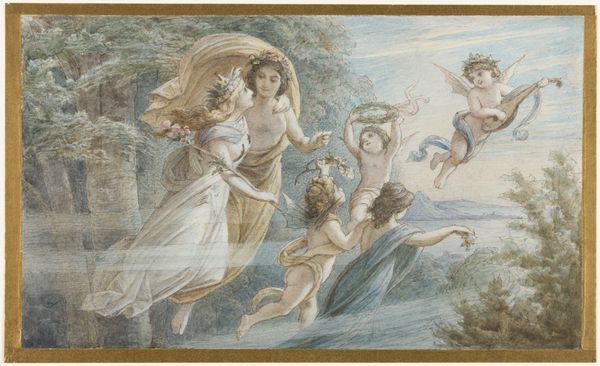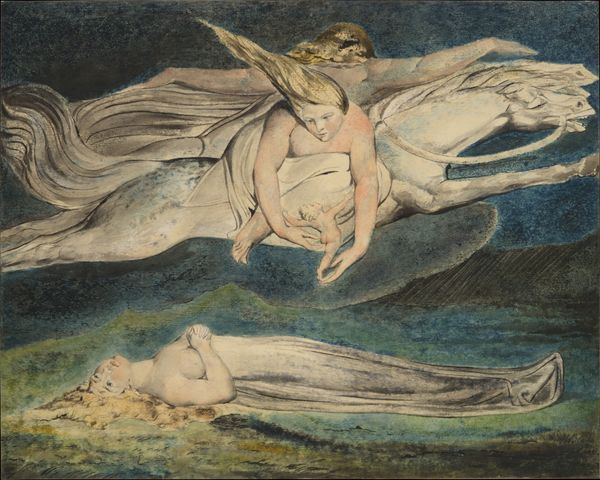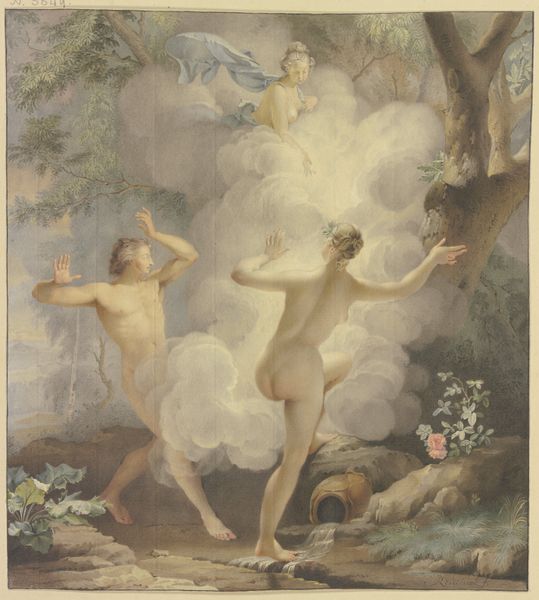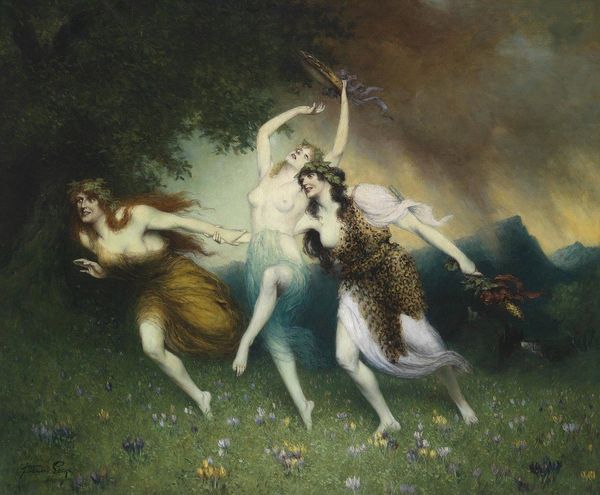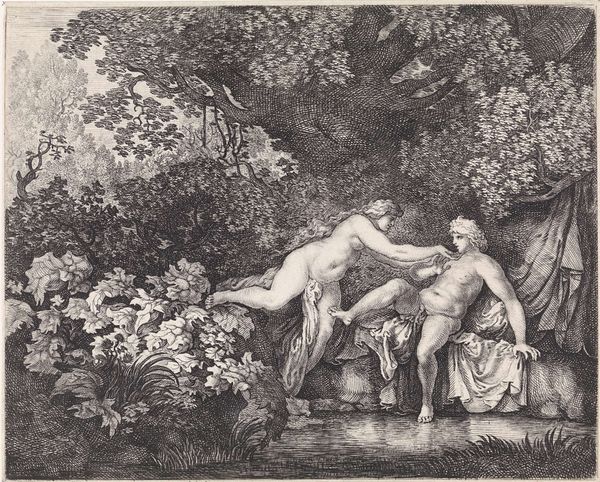
Dimensions: support: 475 x 675 mm
Copyright: NaN
Curator: What a strangely beautiful scene. It feels both ethereal and unsettling. Editor: Indeed. This is William Blake's "Oberon, Titania and Puck with Fairies Dancing," currently housed at the Tate. Blake, born in 1757, often used mythological and literary sources, like Shakespeare, to explore complex social and spiritual ideas. Curator: The swirling figures, their almost translucent bodies...they evoke a sense of liberation but also a loss of individual identity within a collective. Is Blake commenting on the societal pressures to conform? Editor: Precisely! Blake was deeply critical of institutional power, particularly the Church and the monarchy. Fairies were a popular subject, but here they are tools for critiquing social norms and exploring alternative states of consciousness. Curator: It’s powerful how he uses such delicate materials to convey such potent messages of social resistance and the search for liberation. Editor: Blake's art was about more than just aesthetics; it was about enacting change.
Comments
tate 8 months ago
⋮
http://www.tate.org.uk/art/artworks/blake-oberon-titania-and-puck-with-fairies-dancing-n02686
Join the conversation
Join millions of artists and users on Artera today and experience the ultimate creative platform.
tate 8 months ago
⋮
At the end of A Midsummer Night’s Dream, fairy king Oberon and queen Titania make friends again, and Moth, Peaseblossom, Cobweb and Mustardseed dance in a ring, while Puck claps the beat.William Blake’s fairies dance on weightless tiptoes wearing petals, leaves and gauzy dresses. They look human, but are small compared to a tree trunk. The strange, silvery light from the fireflies transforms them into magical beings. Blake’s fairy features and dancing fairy rings helped define how we think of fairies today. Gallery label, October 2020
